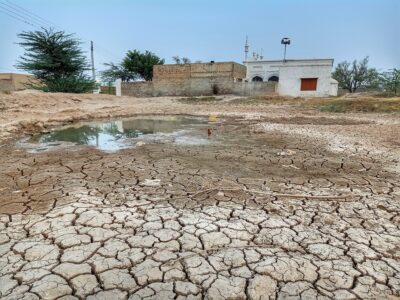(Edit 6/16/10: Substituted some images from the paper for those previously used)
It is tricky to talk about research that is still underway, when you can’t yet discuss concrete results, but I want to share a particularly fascinating project happening at the Columbia Water Center. A CWC research team is analyzing a complicated issue in a highly conflicted part of the world, and trying to find a way forward. They are taking an in-depth look at Central Asia (Kyrgyzstan, Tajikistan, Uzbekistan, Turkmenistan, and Kazakhstan), and the environmental, political and economic crisis building there.

A small nutshell description of a vastly complex situation: The five states are connected by two major rivers, the Syr Darya and the Amu Darya, which are fundamental to their survival. While under Soviet control, a system of infrastructure and commerce was set up to manage the region’s water resources. The upstream states (Kyrgyzstan and Tajikistan) had dams and hydroelectric energy generation facilities, and were able to both produce electricity part of the year, and provide water to the downstream states (Uzbekistan and Turkmenistan) for irrigation during drier periods. For their part, the downstream states provided the upstream states with coal and natural gas to supplement their energy needs. This worked well enough as long as the Soviet State was enforcing the transactions.
With the break-up of the Soviet Union, the newly independent republics had to either learn to work together on their own to manage and improve the system – or not. In actuality, each has tended to retreat into isolation, controlling their respective resources, water or energy, to their own immediate benefit without consideration for the needs of the other states. The upstream countries have the advantage of dams and reservoirs which can capture the water, and have no obligation to release enough for downstream farmers to irrigate their crops. The downstream countries have fossil fuels for energy production, which they are under no obligation to share. Religious and political differences make cooperation increasingly difficult, to understate the issue.
Toktogul Reservoir, Kyrgyzstan:

To complicate things further, climate change is expected to affect the region sharply. In very general terms, over the next 50 years or so, Central Asia might see an increase in runoff from the mountains as warming temperatures melt glaciers. After that, towards the end of the 21st Century, there is likely to be a pronounced decline in runoff as most of the land-ice will have vanished – less water for every need. So there will at first be flooding that must be managed, followed by a scarcity of water for irrigation, while at the same time warming temperatures will cause faster evaporation in the fields.
Irrigation Canal, Tajikistan:
The CWC project pulls together several of the different factors through a ‘system-based computational model approach’ to make a case for long-term management of the water resources. On one hand, they are predicting the environmental changes (precipitation, temperature, runoff, etc) given the uncertainty of future climate conditions. On the other hand, the project also explores the economic, social and political implications of diminished water resources in the region. The analysis is intended to provide information and options for decision makers.
Figure: Glacier melt and runoff before 2049. These preliminary findings from the study show the glaciers that are expected to melt (red), the movement of the runoff (arrows) and the increase in volume of runoff in cubic meters per second (blue shading). The model assumes an increase in atmospheric CO2 emissions from 10 gigatons of carbon per year to 30 gigatons of carbon per year:
Funded in part by the Earth Institute’s CORC-ARCHES program at the Lamont-Doherty Earth Observatory and carried out in collaboration with ETH Zurich, the study stresses the importance of cooperation between the republics to prepare for the long-term needs, and avoid isolated short-term crisis management that will make things worse. The answer, they say, lies in an interdisciplinary understanding of the problems, and a collaborative approach to solutions.
The research team, led by Tobias Siegfried, CWC Associate Research Scientist, is preparing two papers.One will be an academic journal article exploring the physical data and climate models that help predict future environmental conditions.The second paper will synthesize the information into a discussion of the policy issues and implications, for a professional audience.
CWC will continue to report on this important issue, and on the research as it is completed and published.
—
Excerpt from the policy working paper, ‘Environmental Change and Security: Informing the Debate in Central Asia’, not for attribution: “Climate change is going to shift the rhythm of water’s spatial and temporal distribution, affecting huge numbers of people, and possibly, according to some, prompting conflict. Policy, however, if properly informed, can mitigate much of the impact. But such policies can only come through rigorous, context-specific mapping of the relationships between a changing climate and an attendant conflict.”
Academic paper: ‘Coping with International Water Conflict in Central Asia: Implications of Climate Change and New Dams in the Syr Darya Catchment’
Authors: Tobias Siegfried (CWC), Thomas Bernauer (ETH Zurich), Renaud Guiennet (Danish Technical University), Scott Sellars (CWC), Andrew W. Robertson (IRI), Justin Mankin (Stanford University), Peter Bauer-Gottwein (Danish Technical University)
—
Follow Columbia Water Center on Twitter




[…] escalated since their freedom following glasnost in 1991. Kazakhstan, Turkmenistan and Uzbekistan want more water for their water-gluttonous crops of cotton, wheat and rice, while upstream, Kyrgyzstan and […]
[…] Central Asia, the research reaches from Climate Change, via the stand off between the rather poor Kyrgyzstan and Tajikistan, who have all power over the […]
In Climatic Change , 105, issue3-4 I describe a development in evaporation control that may interest the authors.